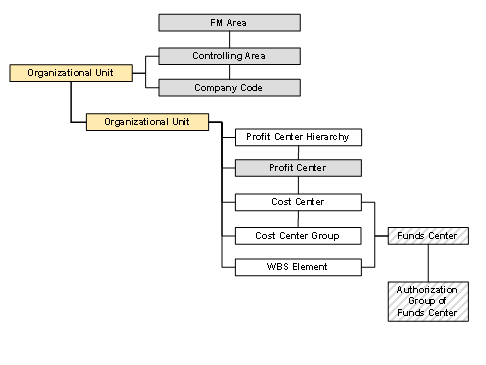
A period cost is charged to expense on the income statement as soon as it is incurred. Most period costs are considered periodic fixed expenses, although in some instances, they can be semi-variable expenses. For example, you receive a utility bill each month that is not directly tied to production levels, but the amount can vary from month to month, making it a semi-variable expense. Costs are classified as period costs if they are non-manufacturing costs incurred during the period. Some materials (such as glue and thread used in manufacturing furniture) may become part of the finished product, but tracing those materials to a particular product would require more effort than is sensible.
Speaking of financial statements, it’s important that you take the time to review your financial statements on a regular basis. As an owner, you rely on their accuracy to make key management decisions. This can be particularly important for small business owners, who have less room for error. If product and period costs are overstated or understated, or not recorded at all, your financial statements will be wrong as well.

In managerial and cost accounting, period costs refer to costs that are not tied to or related to the production of inventory. Examples include selling, general and administrative (SG&A) expenses, marketing expenses, CEO salary, and rent expense relating to a corporate office. The costs are not related to the production of inventory and are therefore expensed in the period incurred. In short, all costs that are not involved in the production of a product (product costs) are period costs. Period costs are the costs that cannot be directly linked to the production of end-products.
Managerial Accounting
Period costs are selling and administrative expenses, not related to creating a product, that are shown in the income statement in the period in which they are incurred. In general, overhead refers to all costs of making the product or providing the service except those classified as direct materials or direct labor. (Some service organizations have direct labor but not direct materials.) In manufacturing companies, manufacturing overhead includes all manufacturing costs except those accounted for as direct materials and direct labor.
- Many employees receive fringe benefits paid for by employers, such as payroll taxes, pension costs, and paid vacations.
- Administrative costs may include expenditures for a company’s accounting department, human resources department, and the president’s office.
- Period costs are those not related to the production of the product.
- In accounting, all costs incurred by a company can be categorized as either product costs or period costs.
- You should schedule regular meetings with staff and professionals to seek ways to better manage the company and reduce costs.
Examples of product costs include the cost of raw materials, direct labor, and overhead. Before the products are sold, these costs are recorded in inventory accounts on the balance sheet. Product costs are sometimes referred to as “inventoriable costs.” When the products are sold, these costs are expensed as costs of goods sold on the income statement. The company has one very large manufacturing facility but has a few dealerships and offices around the country.
How Do You Calculate Period Costs?
Salary can be both a product cost and a period cost depending on the activities of the worker. Salary paid for the production floor manager is classified as a product cost since the cost is incurred for actual production of the product. Salary paid to an executive is a period cost, since the executive does not work directly on product production. Overhead, or the costs to keep the lights on, so to speak, such as utility bills, insurance, and rent, are not directly related to production. However, these costs are still paid every period, and so are booked as period costs.
- Instead, these expenses are attributed to selling and general administrative activities.
- Under one school of thought, period costs are any costs that are not product costs.
- Should this spent money be expensed on the income statement immediately?
- Bringing an understanding of period and product costs to a value chain or break-even analysis helps you quickly identify what types of expenses are hampering your business’s profitability.
It follows logically that period costs are expensed in the same timeframe — or period — they’re incurred. Given that many materials go into the production of goods and services, it is important that strict measures are put in place to monitor different materials as they are purchased at varying different amounts. For a company that uses direct costs, standard inventory valuation measurement must be used to avoid miscalculation of items which will affect the direct costs of production.
Non-manufacturing costs are generally broken down into selling costs and general and administrative costs. Recording product and period costs may also save you some money come tax time, since many of these expenses are fully deductible. But you won’t be able to deduct them if you don’t know what they are. Period costs are the costs that your business incurs that are not directly related to production levels. These expenses have no relation to the inventory or production process but are incurred on a regular basis, regardless of the level of production.
Create a Free Account and Ask Any Financial Question
Period costs can be found in the expense section of the income statement. Direct materials are the raw materials that are integrated into the product. If you’re using the wrong credit or debit card, it could be costing you serious money.
ZW Data Action Technologies Reports Second Quarter and First Half 2023 Unaudited Financial Results – Yahoo Finance
ZW Data Action Technologies Reports Second Quarter and First Half 2023 Unaudited Financial Results.
Posted: Mon, 21 Aug 2023 20:30:00 GMT [source]
Rent expense for the manufacturing facility is not a period cost since it is related to product manufacturing. However, rent expense for the office is since production does not take place in the office. The manufacturing facility manager’s salary is not a period expense since it is considered a manufacturing overhead cost. On the other hand, the administrative assistant’s salary is a period cost since she works in the office and not on the production floor.
The company rents offices for their executives and marketing team. The company manufactured and sold 1,000 cars during the fourth quarter. Each car costs $10,000 in direct materials, $10,000 in direct labor, and $20,000 in manufacturing overhead. The company has three executives who each get paid $250,000 every quarter.
Period vs. Product Cost
What is important to note about these product costs is that they attach to inventory and are thus said to be inventoriable costs. In general, period expenses include items such as rent, utilities, insurance, and property taxes. They can also include legal fees and loan interest if these amounts are paid in advance. When you differentiate period costs from others, you’re breaking down your expenses to provide insights about where your money is going.
Instead, you depreciate them over their useful life, expensing a portion of your purchase each year. Professional service fees, such as your lawyer and CPA fees, are administrative expenses. Your business’s recurring expenses, aside from inventories and production expenses, are periodic. We’re firm believers in the Golden Rule, which is why editorial opinions are ours alone and have not been previously reviewed, approved, or endorsed by included advertisers. Editorial content from The Ascent is separate from The Motley Fool editorial content and is created by a different analyst team.
Finally, both executives’ salaries are period costs since they also do not work on the production floor. There are many costs businesses incur that are not related directly to product manufacturing. The most common of these costs are sales and marketing costs and administrative costs.
These expenses are not directly related to the production of inventory and thus does not form part of the cost of goods sold and are charged in the income statement of the company. These costs does not constitute to production of inventory and hence these costs can never be capitalized and always form part of the income statement of the company. Examples Period costs of these costs are Selling cost, overhead costs, advertisement costs etc. Typically, managerial accountant want to classify expenses in categories that can improve operations. Instead, these expenses are attributed to selling and general administrative activities. Product costs include the costs to manufacture products or to purchase products.
Additionally, the company employs one lawyer who gets paid $75,000 every quarter, and one accountant who gets paid $75,000 every quarter. Also, they spent $1,000,000 on market research and $1,000,000 to boost brand awareness during the fourth quarter. This company has $3,400,000 in period costs for the fourth quarter from their selling, marketing, and administrative expenses. Their selling expense is from the commission they pay their salespeople.
What is the approximate value of your cash savings and other investments?
Essentially, a period cost is any cost that is not a product cost. Examples of period costs include sales costs and administrative costs. Period costs are always expensed on the income statement during the period in which they are incurred.
Coles posts $1.1bn profit amid grocery price surge and cost of living crisis – The Guardian
Coles posts $1.1bn profit amid grocery price surge and cost of living crisis.
Posted: Tue, 22 Aug 2023 04:03:00 GMT [source]
Product costs for a manufacturer will be the direct materials, direct labor, and manufacturing overhead used to manufacture a product. In order to calculate period costs, one must first identify the specific costs that are incurred during a particular period. This may include costs such as labour costs, materials costs, and overhead costs. Once the specific costs are identified, they must be allocated to the appropriate period. This can be done using either a direct or an indirect allocation method. Direct allocation methods allocate costs based on the amount of time or resources that are used during the period.
These fringe benefit costs can significantly increase the direct labor hourly wage rate. Other companies include fringe benefit costs in overhead if they can be traced to the product only with great difficulty and effort. A soft drink manufacturer might spend very little on producing the product, but a lot on selling. Conversely, a steel mill may have high inventory costs, but low selling expenses.
From there, you can make decisions that will make your business more profitable. The company’s period costs are $169,800 ($147,300 operating expenses + $500 interest expense + $22,000 tax expense). The first expenses listed on a multi-step income statement are cost of goods sold, which is a product cost.